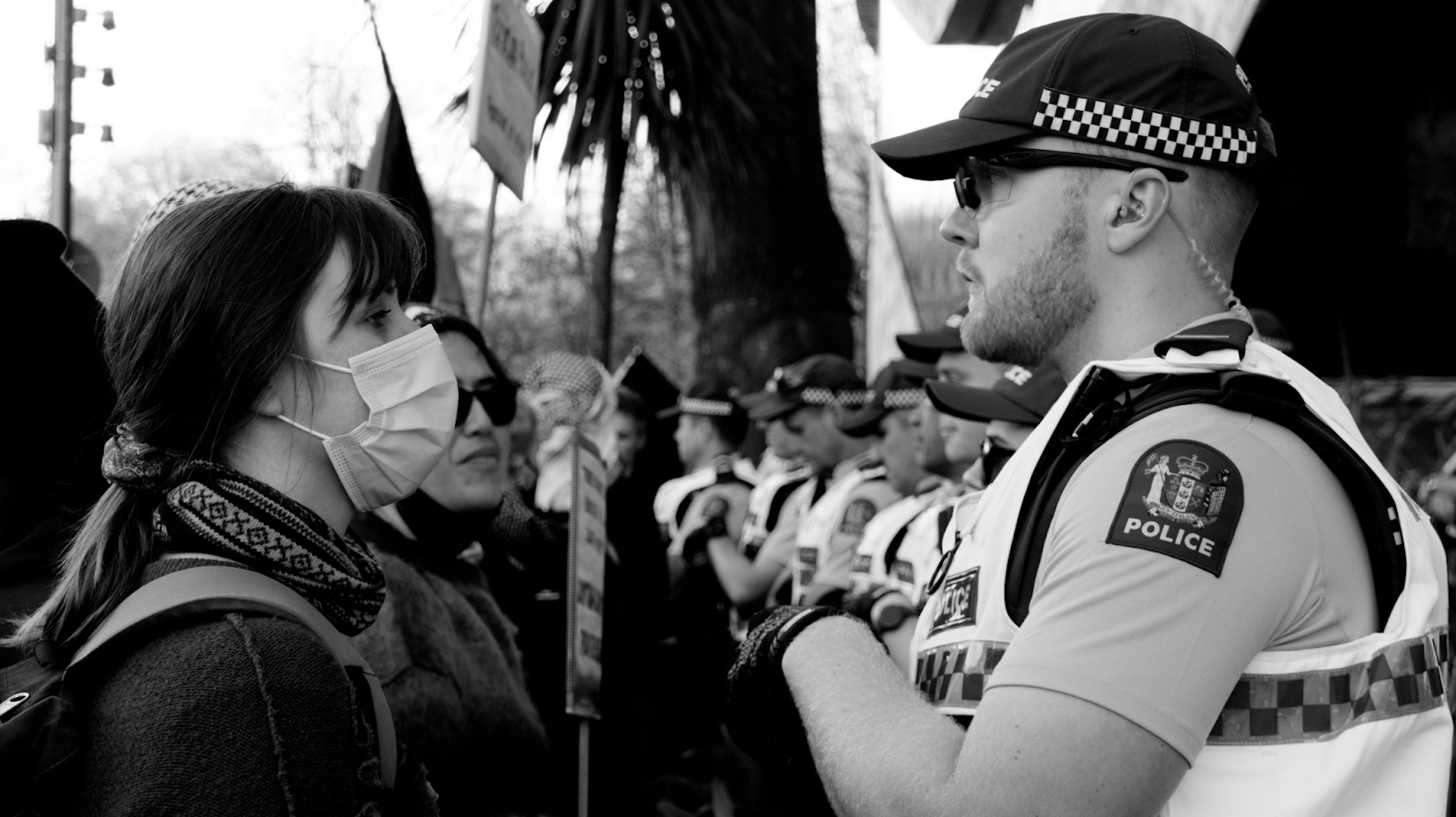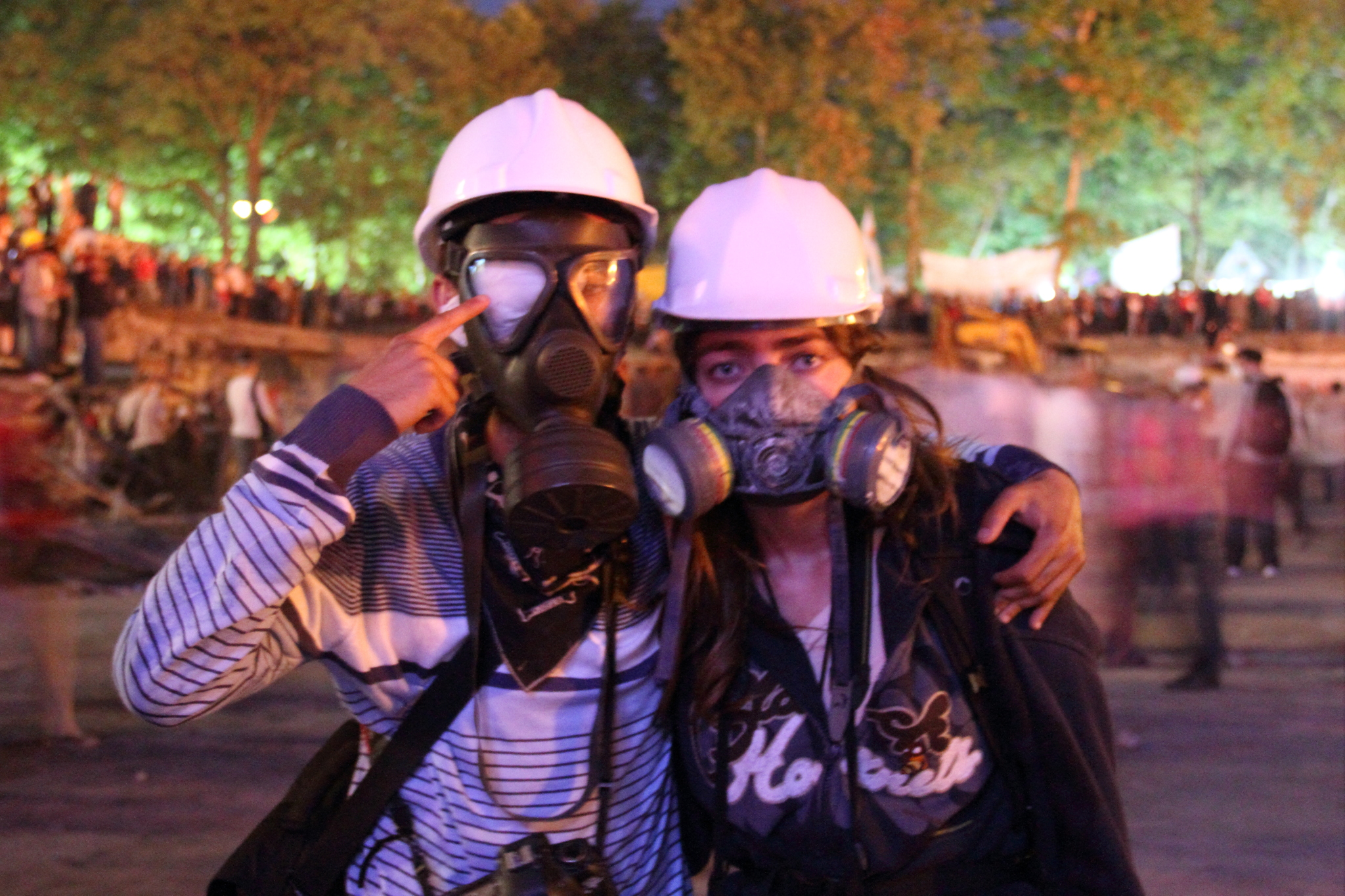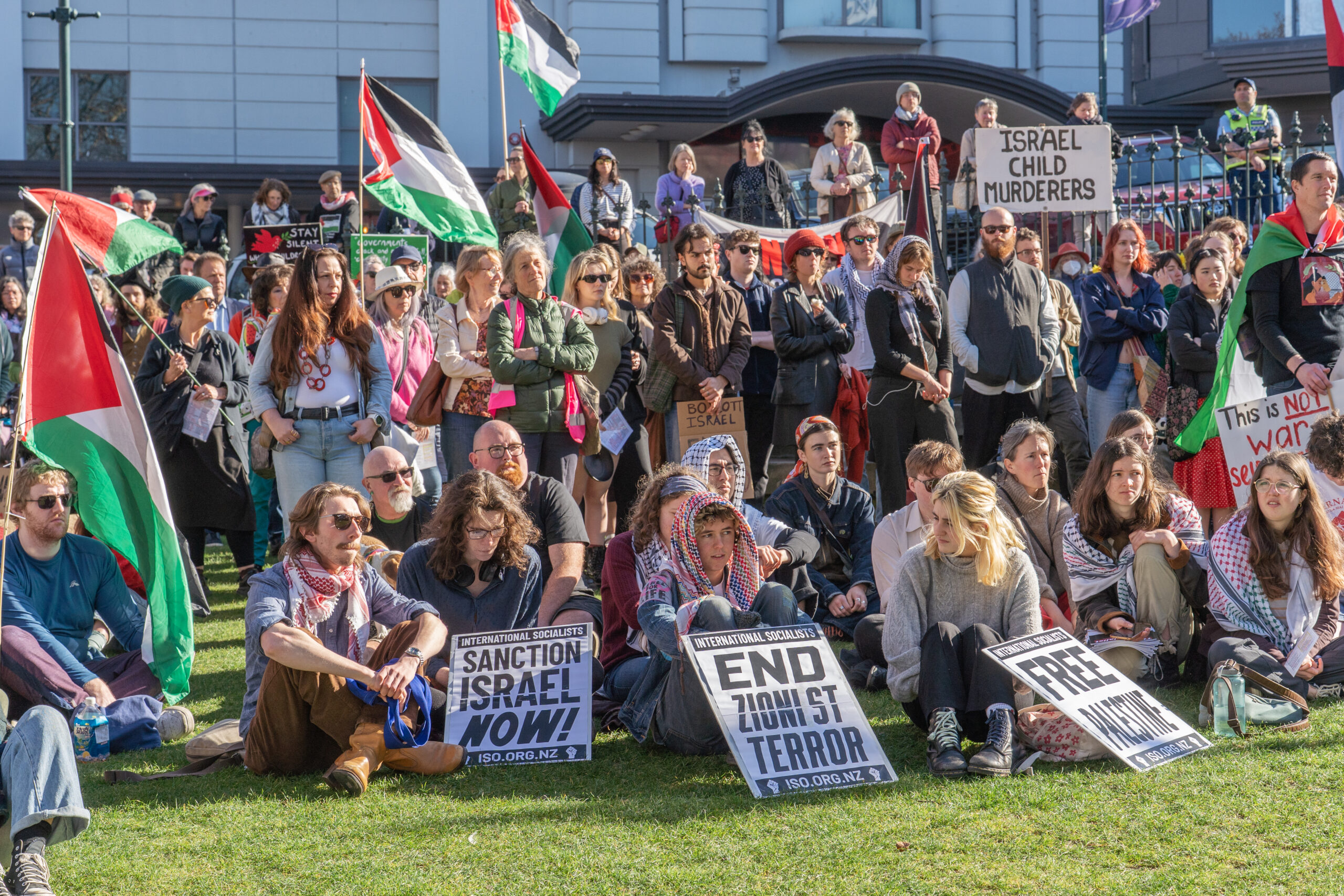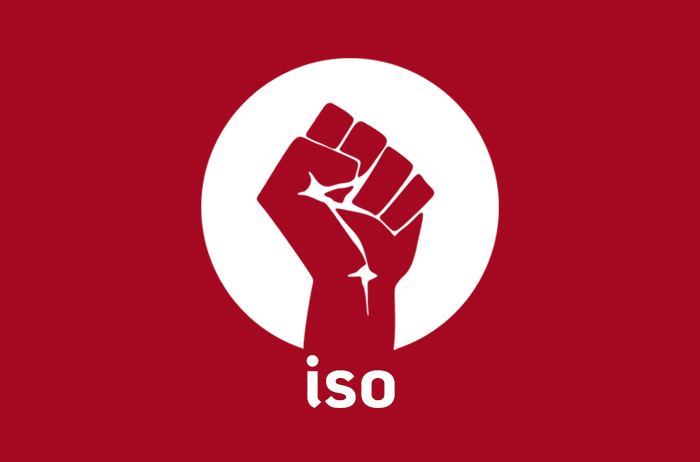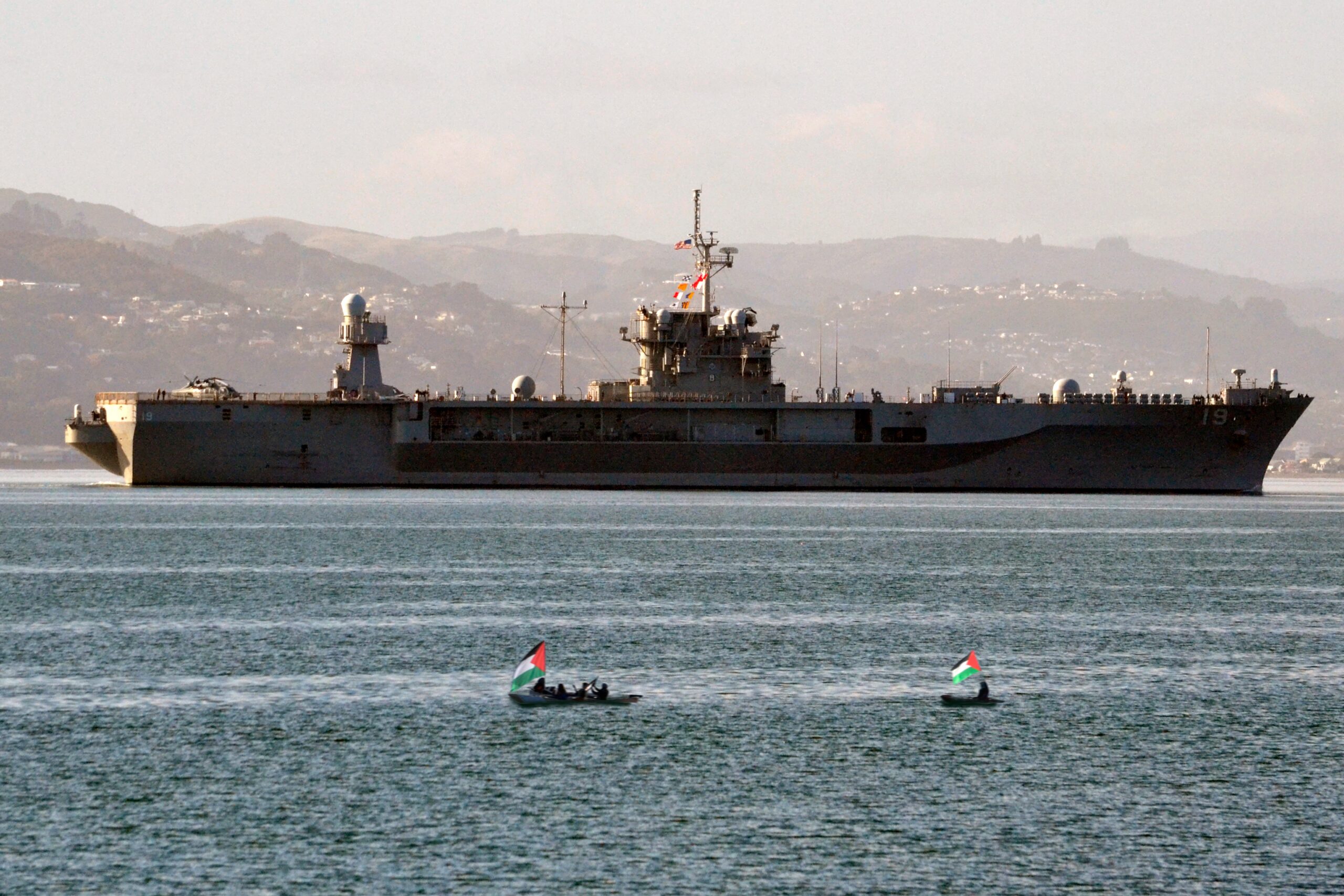Ashley Smith and Alan Maass provide the facts you need to know about the U.S. war on ISIS–and why it will make the world more chaotic and violent than ever.
WHEN BARACK Obama strode to the podium of the United Nations in late September and made his case for yet another U.S. war in the Middle East–this time against the Islamic State in Iraq and Syria (ISIS) and its “network of death”–he sounded like no one so much as his despised predecessor and the neocon hawks of the Bush administration.
This throwback to the Bush years is more than just verbal. Obama invoked George W. Bush’s legal justification for the Iraq war–the infamous Authorization for the Use of Military Force passed days after September 11, 2001, which Obama and his outgoing Attorney General Eric Holder once thought so suspect that they promised to repeal it.
Just like Bush, Obama has bypassed Congress and the United Nations to create his own “coalition of the willing,” comprised of some 40 countries, including several authoritarian Arab states, to prosecute the war.
Barack Obama–who, once upon a time, derided the 2003 invasion of Iraq as a “dumb war,” in part because it gave rise to murderous sectarian forces like ISIS–has now launched the third U.S. war in Iraq in less than a quarter century, and now with accompanying air strikes in Syria.
So much for the Nobel Prize-winning “peace president,” once swooned over by liberals who admired him for being antiwar. Obama has been riding a wave of popular opposition to ISIS’s sectarian violence and oppression. Opinion polls in late September showed support for air strikes in both Iraq and Syria at 70 percent, though that number is certain to fall and doesn’t reflect real enthusiasm about the war.
For the time being, Obama is getting away with U.S. imperialism’s age-old claims of going to war with high-minded humanitarian goals. In reality, this new stage in the “war on terror” is driven by the same aims that have guided all previous incursions into the Middle East–oil and empire.
It is unlikely to succeed even on its own terms. But however it is judged from the standpoint of imperialism, this war will be a disaster for the people of the Middle East and beyond. It will kill innocent civilians, it will drive up support for the reactionary fundamentalists of ISIS, it will intensify sectarian conflict between Sunnis and Shia around the region, it will enforce the counterrevolutionary order in the Middle East, and it will embolden the world’s most powerful governments to go to war–the U.S. chief among them.
– – – – – – – – – – – – – – – –
The Empire of Hypocrisy
People around the world justly abhor ISIS. Its gruesome beheadings, sectarian massacres and reactionary politics are all appalling.
But anti-imperialists must insist on the truth–ISIS’s crimes are small-scale compared with the U.S. government’s long history of state terrorism.
Remember that the U.S. is the only nation to ever drop atomic weapons during wartime–on the civilian populations of Hiroshima and Nagasaki in Japan. Washington’s war in Vietnam and Southeast Asia killed as many as 3 million people. In Iraq, the latest U.S. war and occupation caused the deaths of more than 1 million people and drove many millions more from their homes.
As for Barack Obama, he has stepped up the drone wars, killing thousands of people, mostly civilians, over the last five years. Jeremy Scahill’s movie Dirty Wars documents the horrific cost of these remote-control beheadings. And far from achieving any semblance of stability, the “war on terror” under Obama has only caused more chaos and suffering.
And that’s only the toll from U.S. wars, which is just one face of the American empire. Another is the network of dictatorships and hereditary monarchies that rule over various Arab countries, keeping them safe for U.S. business and political interests.
Washington’s most important Arab ally, Saudi Arabia, promulgates the Wahabist ideology that gave birth to ISIS, and it has set the example for ISIS’s sickening repression, including execution by beheading. Amnesty International documents that 79 people were beheaded in 2012 in the infamous plaza in the Saudi capital of Riyadh popularly known as “Chop-Chop Square.”
Then there is the U.S. government’s pivotal ally in the Middle East: Israel, which killed 2,200 people in a war on the Palestinians of Gaza this summer that dwarfed the terrorism of ISIS.
– – – – – – – – – – – – – – – –
Spawning Reaction in the Middle East
All this is done in the name of protecting and projecting U.S. interests. Since the Second World War, the U.S. government has sought to control the flow of Middle East oil as part of maintaining dominance in the world capitalist system.
The attitude of U.S. imperialism was summed up by the Democratic president now thought to be the most committed to peace and human rights: Jimmy Carter. In his 1980 State of the Union address, Carter declared: “Any attempt by any outside force to gain control of the Persian Gulf region will be regarded as an assault on the vital interests of the United States of America, and such an assault will be repelled by any means necessary, including military force.”
In addition to outright military intervention, U.S. imperialism supports a network of reactionary regimes that rule with an iron fist. During the Cold War with the former USSR, the U.S. relied not only on its main ally Israel, but the rulers of Saudi Arabia, Egypt and Iran to keep out Russia and other rivals, and to defeat all indigenous resistance from Arab nationalism and the secular left.
The 1978-79 revolution in Iran toppled one of the pillars of this network of tyrants: the Shah. Saudi Arabia became that much more important for the U.S. to maintain hegemony.
But the character of the Saudi regime makes a mockery of Washington’s claims to be upholding democracy. On the contrary, by supporting the Saudi dictators, the U.S. has helped to spread the very Sunni fundamentalism it is now at war against, in the form of ISIS.
In his book Unholy Wars, former ABC News journalist John Cooley documents how the U.S. collaborated with Saudi Arabia and Pakistan to organize the fundamentalist opposition to the former USSR occupation of Afghanistan in the 1980s. Both the Taliban and Osama bin Laden’s al-Qaeda would emerge out of this fundamentalist resistance.
At the time, U.S. leaders were proud of their strategy of promoting Jihadists. Carter’s National Security Adviser Zbigniew Brzezinski boasted that U.S. support for these reactionaries gave “the USSR its Vietnam War…What is most important to the history of the world? The Taliban or the collapse of the Soviet empire? Some stirred-up Muslims or the liberation of Central Europe and the end of the Cold War?”
Thus, the U.S. helped give rise to al-Qaeda, which is, in turn, the ancestor of ISIS. Following the USSR’s withdrawal from Afghanistan in defeat, bin Laden’s network turned on Saudi Arabia and its imperial backer, the U.S. Al-Qaeda waged an escalating terrorist campaign that culminated in the September 11 attacks on the World Trade Center and Pentagon.
As the foreign policy expert Chalmers Johnson wrote in his prophetic book Blowback, published a year before September 11:
Terrorism, by definition, strikes at the innocent in order to draw attention to the sins of the invulnerable. The innocent of the 21st century are going to harvest unexpected blowback disasters from the imperialist escapades of recent decades. Although most Americans may be largely ignorant of what was, and still is, being done in their names, all are likely to pay a steep price–individually and collectively–for their nation’s continued efforts to dominate the global scene.
In the aftermath of terrorist attacks or resistance against U.S. military forces, the mainstream media often ask the question: “Why do they hate us?” The first answer is that the people of the Middle East have greater reason to ask this question about the U.S., given the bloody history of American imperialism in the Middle East.
But it should also be said that bitter anger toward the U.S.–which is occasionally directed in violent attacks on American targets–is the inevitable product of an empire that has pursued the interests of U.S. rulers, regardless of the terrible toll in death and suffering inflicted halfway around the world.
– – – – – – – – – – – – – – – –
Reaping the Whirlwind of Sectarian Conflict
Barack Obama’s aims for his new war are no more humanitarian than his predecessors. He wants to ensure U.S. domination over the Middle East and its oil, so Washington’s rivals–China and Russia, which back Syria and Iran–don’t.
The roots of the current crisis date back even further, but the launching of the “war on terror” was an important turning point. George Bush and his administration used the alibi of 9/11 as justification for an aggressive assertion of U.S. power.
Bush and his fellow hawks told an assortment of lies to justify the invasion of Iraq, butformer U.S. Federal Reserve Chair Alan Greenspan admitted the real motives in his memoir The Age of Turbulence, when he stated, “I am saddened that it is politically inconvenient to acknowledge what everyone knows: the Iraq war is largely about oil.”
The Bush gang hoped to carry out a series of regime changes in the Middle East, first in Iraq and then in Syria and Iran. With the region securely under U.S. control, the U.S. would then preside over what the neocons called a “New American Century” of unrivaled dominance over the world system.
Bush’s imperial fantasies ended in failure for U.S. imperialism–and in catastrophe for the people of Iraq and the whole region. When the U.S. occupation of Iraq stirred the rise of a Sunni and Shia resistance, the U.S. not only unleashed naked military force, but it turned to the oldest trick in the colonial handbook: a strategy of divide and conquer along sectarian lines.
These conditions attracted the Jordanian militant Abu Musab al-Zarqawi to Iraq, where he founded al-Qaeda in Iraq (AQI), the predecessor organization of today’s ISIS. AQI distinguished itself among the forces of the Sunni resistance with its deadly terror attacks directed against Shia communities. The U.S. exploited Shia anger toward AQI to make sure the Sunni and Shia resistances remained separate.
The new central government of Iraq, led by Prime Minister Nuri al-Maliki and dominated by Shia political parties, installed their militias in the new Army and police force, turning them into sectarian institutions. The divide-and-conquer strategy of the U.S. occupiers gave rise to a horrific civil war, leading to wholesale massacres, ethnic cleansing and the world’s worst refugee crisis at the time.
The U.S. withdrawal from Iraq boosted Iran’s power in the region, in alliance with the Maliki regime in Iraq and the dictatorship of Bashar al-Assad in Syria. To contain Iran’s rise, Bush and then Obama supported a network of authoritarian Sunni-dominated states plus Israel against Iran’s so-called “Shia Crescent.”
Each side began backing proxy fundamentalist forces in various conflicts. Thus, the sectarian dynamic set in motion during the occupation of Iraq was spread throughout the region–clearing the way for ISIS to gain strength, as we shall see.
– – – – – – – – – – – – – – – –
Counterrevolution Against the Arab Spring
The other factor to understand about the current situation is the backlash of the U.S.-aligned network of Arab regimes against the threat posed by the Arab Spring in 2011–a mass struggle that bridged sectarian divisions to challenge the autocratic rulers, their neoliberal policies and collaboration with imperialism.
Three years later, the counterrevolution against the pro-democracy uprisings in Egypt, Tunisia and elsewhere is in full swing. As the Australian socialist Corey Oakley wrote, “The most effective strategy employed by the Arab counterrevolution so far has been its effort to reframe the struggle between dictatorships and mass popular struggle into a battle between authoritarian regimes (secular or not) and Islamist extremism.”
This strategy has played out differently in various countries, but nowhere with greater effect than in Syria, where ISIS was able to re-establish itself in the aftermath of the Iraqi civil war.
Faced with a popular revolt inspired by the ones in Egypt and Tunisia, Bashar al-Assad waged total war–at first against defenseless nonviolent demonstrations and then against rebel groups that armed themselves as best they could to defend the opposition against the regime’s terror.
Assad also turned to his own form of divide and rule. He sought to hold onto a base of support among Alawites (an offshoot of Shia Islam) and other ethnic and religious groups by portraying the uprising as the work of Sunni radicals who would carry out their own ethnic cleansing if the regime fell.
At the same time, he released more than 1,000 Jihadist prisoners from Syrian jails. This was a bald attempt to shift the balance of forces inside the opposition–away from radical, secular proponents of democracy and toward the reactionary Islamists.
The U.S. claimed to support the struggle against the Assad regime, but withheld its full backing, hoping for elements of the regime to topple Assad and then rule in his place, using the same mechanisms of repression–in other words, leaving the old order intact, but with a new face.
In keeping with the regionalization of the sectarian conflict, America’s allies Saudi Arabia and Qatar supported sectarian Sunni groupings against the wider secular opposition. Some of the devout bourgeoisie in both countries bankrolled the re-emergence of AQI in the form of ISIS.
ISIS targeted Syrian revolutionaries; seized territory, oil wells and refineries; and set up an emergent state, its so-called caliphate. Instead of fighting the regime, ISIS went so far as to sell its oil to raise funds for its project of conquering the Sunni sections of Iraq. In turn, Assad refused to attack ISIS–for the last year or two, there has been an unspoken truce between them.
From its Syrian base, ISIS launched an offensive this summer that seized control of whole sections of western and northern Iraq–along with large stores of U.S.-supplied military equipment left behind by the disintegrating Iraqi Army that have been put to use securing its hold in Syria.
– – – – – – – – – – – – – – – –
No Good Options for the Empire
With ISIS threatening to overrun Erbil, the capital of the Iraqi Kurds, Washington’s most steadfast ally throughout the war and occupation of Iraq, the U.S. responded with air strikes against ISIS positions. The Obama administration has relied on wide public support to organize an international coalition of countries to participate in the war on ISIS–ranging from the region’s old colonial powers, like Britain and France; to Washington’s dictatorial regional allies, like Saudi Arabia and Qatar.
But that war is far from won.
The U.S. wants to use air power to attack ISIS forces, its command structure and the oil industry it controls. But as Independent journalist Patrick Cockburn reported in late September, there is little reason to believe air strikes “will be able to turn the tide against ISIS. There have been 194 U.S. air strikes in Iraq since August 8, but the militants are still advancing six weeks after the first bombs and missiles exploded.”
Defeating ISIS will require ground forces capable of doing battle with experienced fighters–and the U.S. has no good options here.
The Iraqi Army, which the U.S. has spent $26 billion on training and arming, is not actually a fighting force, but a sectarian corruption racket used by the regime to repress the largely nonviolent protest movement mobilized by Sunnis during 2013. Faced with the ISIS-led insurgency, its units collapsed and fled. It will take months, if not years, before the Army will be effective against ISIS–if it ever will be.
Then there’s the Kurdish peshmerga. Once a guerrilla militia, it has largely functioned as a police force for the last decade. It isn’t capable of fighting ISIS’s battle-tested forces, now armed with advanced U.S. weaponry captured during its summer offensive in Iraq. In fact, the peshmerga was nearly routed by ISIS before the U.S. began its air strikes in August.
That leaves the prospect of U.S. combat troops. Conservative political leaders, seemingly with support from the Pentagon brass, are pushing for this option. But other sections of the U.S. foreign policy establishment, Barack Obama included, are resisting this direction, fearing a repeat of the two failed wars in Iraq and Afghanistan. They recognize that there is no popular support for another imperialist ground war in the Middle East.
Still, if that is the only way to stabilize the region’s state system to ensure the flow of oil to the world economy, all wings of U.S. imperialism will plunge back into a ground war in Iraq.
The scenarios for a ground war are even more twisted in Syria. Assad and ISIS have together decimated the genuine revolutionary resistance, leaving rebel fighters in desperate circumstances, mainly in the north and west of the country. Obama claims that along with air strikes, the U.S. will train 5,000 rebel fighters opposed to the Assad regime to confront ISIS on the ground. But it will be the better part of a year before even the first units can be deployed.
In the meantime, though neither side will admit it, the Assad regime will be the main beneficiary of the U.S. air war against ISIS in Syria. It is the only force capable of filling the vacuum if ISIS is damaged by the air strikes. Until then, it can continue its murderous assault on other rebel forces, secure in knowing that the U.S. is attacking ISIS.
ISIS forces are well established in eastern Syrian cities, and so air strikes are already inflicting civilian casualties and destroying basic infrastructure–such as a grain silo and Syria’s main natural gas plant in late September, according to the Syrian Observatory for Human Rights.
This will only make it easier for ISIS to recruit. In Iraq, the Sunni population tolerates ISIS as a lesser evil compared to the sectarian Shia state in Baghdad. The majority of Sunnis are as appalled as anyone else at ISIS’s violence–and also embittered by the repression the fundamentalists use to rule over them. But ISIS fighters successfully defended Sunnis from the Iraqi regime’s war on them.
The longer the U.S. attacks continue, the more ISIS will be able to portray itself as the defender of the Sunni population against the U.S., its Iraqi Shia allies and the murderous Assad regime.
ISIS has already grown from an estimated 12,000 before its conquest of sections of Iraq to now about 30,000, with other estimates ranging as high as 50,000. In an ominous sign of things to come, Britain’s Daily Mail reports that ISIS “has recruited more than 6,000 new fighters since America began targeting the group with air strike.”
– – – – – – – – – – – – – – – –
Shoring Up a Reactionary Status Quo
SO THERE are no easy solutions for the U.S.–but even if it does manage to win its war on ISIS, the outcome will be utterly reactionary. A victory over ISIS will shore up the existing state system in the region to the detriment of its people.
In Iraq, the defeat of ISIS, if it can be accomplished, would strengthen the corrupt and sectarian Shia state, while Kurds are still denied their right to a national homeland. The Sunni population, meanwhile, has tolerated ISIS’s reign precisely because the alternative is the reign of terror of the Shia-dominated state.
The U.S. strategy, besides dropping bombs, is to try to wring concessions from the new government of Prime Minister Haider al-Abadi in order to lure Sunni leaders away from ISIS. But they would have to agree to be junior partners in the central government, under an apparatus controlled by Shia leaders that has been used to unleash repression against Sunnis. For now, there is no sign of a shift of Sunni leaders away from the ISIS-led insurgency.
In Syria, the Assad regime is almost certain to be the main victor if ISIS is damaged or destroyed. Some voices in the U.S. foreign policy establishment are calling openly for Obama to cut a deal with Assad and open a common front against ISIS. It says a lot about the true motives of U.S. imperialism that leading figures would propose open collaboration with a dictatorship that faced a mass popular uprising just a few years ago.
Meanwhile, the U.S. is strengthening the position of Saudi Arabia, Qatar and other Arab states, which hold their populations in check through brutal repression, proselytize reactionary ideas and support sectarian forces throughout the region. And Israel will be more emboldened to continue its assaults on the Palestinians under the cover of a “war on terror” raging elsewhere in the Middle East.
Beyond the impact on particular regimes, the U.S. war will breed more sectarian conflict between countries.
ISIS will increase its sectarian attacks in both Iraq and Syria–and as the prime target of U.S. imperialism, it will be able to pose as a defender of Sunnis. That will provoke Iranian-backed Shia militias in Iraq and Syria to escalate their terror against Sunnis.
The Financial Times reports that in Iraq, “[A]rmed groups continue to drive Iraqis out of mixed areas surrounding Baghdad and in northern Iraq according to their religious affiliation. ‘We now have complete sectarian cleansing of Shia north of Samarra and Sunni south of Baghdad,’ said Maysoon Damluji, a member of parliament.”
It goes without saying that Saudi Arabia and Qatar–already adept at playing the sectarian card–will try to use America’s war to advance their campaign against Iran’s so-called “Shia Crescent,” This will reproduce the spiral of violence on a wider scale.
Then there is the most reactionary force of all in the Middle East: American imperialism. U.S. success in its war on ISIS would be a disaster for the people of the Middle East. It would further entrench neoliberal economic policies enforced by stabilized autocracies–and further consolidate the counterrevolution against the Arab Spring.
The U.S. empire is responsible for the catastrophe of violence and oppression in the Middle East today. The new war on ISIS will only make things worse.
We oppose all imperialist intervention in the Middle East–including by U.S. rivals Russia and China–in order to provide space for the region’s masses to build a popular movement that can overcome sectarian divisions, challenge the dictators, confront neoliberal policies and break the grip of imperialism.
Here in the U.S., our job is to rebuild an anti-imperialist politics that opposes U.S. military intervention in any form–and builds solidarity with the popular movements for the revolutionary transformation of the Middle East and North Africa.
Republished with permission from SocialistWorker.org


